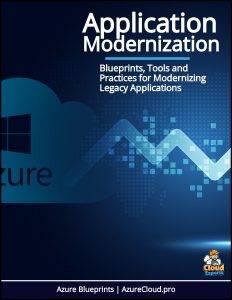Application Modernization Best Practices and Implementation on Microsoft Azure
Implementing best practices in application modernization is crucial for successful migration to cloud platforms like Microsoft Azure.
 Application Modernization is the process of updating and transforming legacy applications to leverage modern technologies, improve performance, enhance user experience, and reduce maintenance costs.
Application Modernization is the process of updating and transforming legacy applications to leverage modern technologies, improve performance, enhance user experience, and reduce maintenance costs.
Implementing best practices in application modernization is crucial for successful migration to cloud platforms like Microsoft Azure.
Modernization is the process of transitioning an organization’s applications, processes, and data management to a cloud-first approach. The goal is to improve organizational and technological performance, enhance the quality of customer and employee experiences, and accelerate time to market for new offerings and updates.
If an organization uses on-premises apps, modernization may involve migrating those apps to a public, private, or hybrid cloud. Commonly modernized apps and data include:
- .NET apps
- Linux web apps
- Java apps
- SAP apps
- SQL databases
App modernization strategies
These strategies are distinguished by an organization’s modernization goals and the need for code changes to the apps themselves. An app modernization strategy is defined during the planning step and put into effect during the implementation step.
- Rehost. Sometimes called “lift-and-shift,” this modernization strategy emphasizes speed because it requires practically no code changes. Organizations take apps from their previous environment and transition them as-is to their current environment.
- Replatform. This approach lies in between rehosting and refactoring. With replatforming, organizations make code changes so that apps can be used with cloud technologies.
- Refactor (or repackage). Refactoring prioritizes productivity as well as speed. With this strategy, apps need only minimal code changes so that they can connect easily to and make the most of a cloud-first environment.
- Rearchitect. If an organization needs cloud scalability, rearchitecting might be the right approach. With rearchitecting, apps functionality and code get modified and extended to scale better in the cloud.
- Rebuild (or rewrite). For recreating an app using cloud solutions, rebuilding is sometimes the right option. It’s a heavier lift, but it may be essential if existing apps have limited functionality or lifespan.
- Replace. If an app won’t meet current or future business needs even after rebuilding, replacing it with a ready-made solution may be necessary. This approach can be faster than rebuilding and free up valuable development resources.
Best Practices for Application Modernization
The steps and strategies for successful app modernization should work towards supporting a framework of organizational goals.
- Assessment and Planning: Conduct a thorough assessment of existing applications to identify legacy components, dependencies, and potential migration challenges. Define clear objectives and goals for modernization, considering factors like scalability, security, and performance.
 Cloud-Native Development: Adopt cloud-native development practices to build applications that are scalable, resilient, and easily deployable on Azure. Leverage Azure Functions for serverless computing and Azure App Service for hosting web applications.
Cloud-Native Development: Adopt cloud-native development practices to build applications that are scalable, resilient, and easily deployable on Azure. Leverage Azure Functions for serverless computing and Azure App Service for hosting web applications.- Containerization and Microservices: Break down monolithic applications into smaller, independent services using containerization and microservices architecture. Utilize Azure Kubernetes Service (AKS) for managing containerized applications and orchestrating microservices.
- DevOps Integration: Implement DevOps practices to automate build, test, and deployment processes, ensuring continuous integration and delivery (CI/CD). Use Azure DevOps for version control, project management, and automated pipelines.
By following these best practices and steps for application modernization on Microsoft Azure, organizations can achieve greater agility, scalability, and efficiency in their digital transformation journey.



